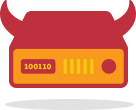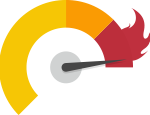
You Don't Have
Unless You Have
report up to 45% more successful searches!
$6.00
SUPER UNL + VPN
+ Unlimited USENET
+ Secure VPN Account (Exclusive)
+ 50 (256-Bit) SSL Connections

Huge Retention
Members who have NewsDemon in their setup are reporting up to 45% more successful searches. We store more than 240TB per day of new article retention and now boast up to 4524+ days of Binary Retention which grows every day.

Unlimited Speed
As the ONLY Usenet provider in the world with three server farm locations, we offer the fastest Usenet experience available. Wherever you are, we have a farm closer to your location. We deployed an NVMe spool set and saw the average latency of articles change from 15ms to 3ms! We pride ourselves on being fast and efficient!

Secure. Private.
NewsDemon Newsgroups provides 256-Bit SSL Encrypted Connections. We will never share your information with outside parties or track your usage unless required by law. We will not threaten to raise prices to entice you to join us, we value your intelligence.
PREMIUM USENET PLANS
Fast. Reliable. Secure.
All Plans Include Unlimited Speed, Premium Retention, 50 SSL Connections, Multiple Server Farms, 24/7 Customer Support, Free Headers, Free Posting, Includes No-Log SlickVPN Protection

We’d love to think we hit the mark with every customer by offering a stellar newsgroup browsing experience, but hey, things don’t always go that way. So should you decide not to stay, Newsdemon offers you a solid 30 day money back guarantee.
So what are you waitng for?
ALL THE FEATURES YOU COULD ASK FOR
Combined with our new West Coast Servers serving Canada and Oceana, and with direct peering connections between the U.K. and our European server farm, our U.K. and European customers will experience the same blazing fast speeds we offer our U.S. customers.
24/7 Support
Uncapped Speeds
Free No-Log VPN
Daily Retention Increases
No Committment Usenet
Uncensored Retention
Vacation Pause Feature
30 Day Money Back Guarantee
Uncensored Newsgroups
SEPA Direct Debit and iDeal Accepted
256 Bit SSL Encryption
4524+ Days Retention
Low Latency NVME Spools
Allowed Streams: 50
Over 110,000 Discussion Groups
All Major Credit Cards Accepted

